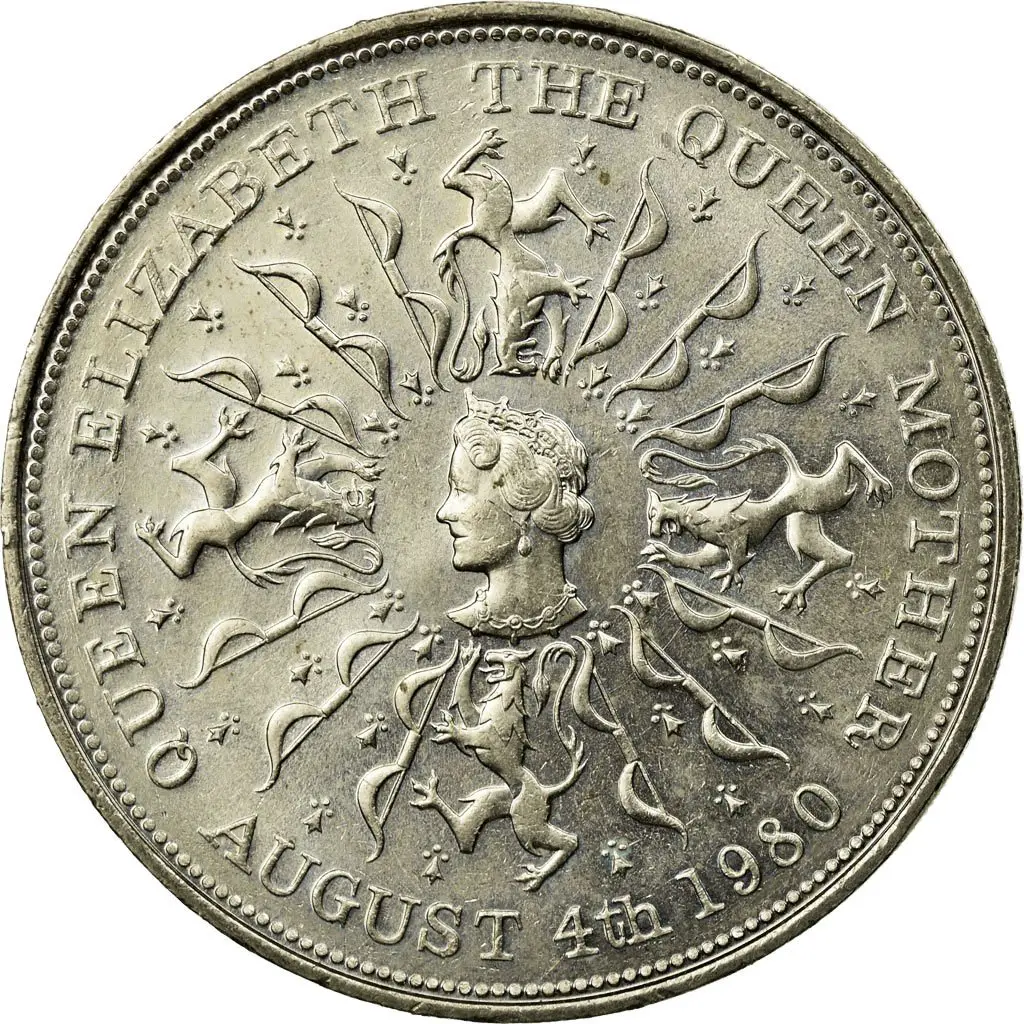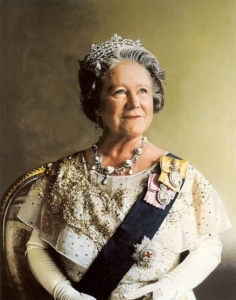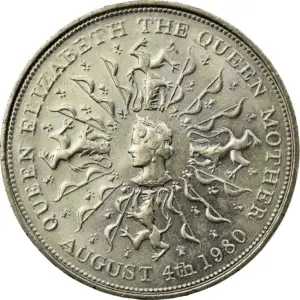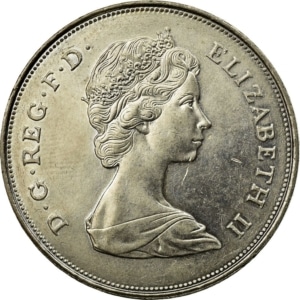In 1980, the Royal Mint released a commemorative issue of the 25p coin to honour the 80th birthday of Queen Elizabeth the Queen Mother. Struck in both standard cupro-nickel and silver proof quality, the coin is bound to be a part of any fan of the Royal Family’s collection.
But how much is the coin worth today, and are they legal tender? We’ve got everything you need to know about the 1980 Queen Mother crown.
Why was the 1980 Queen Mother crown minted?
The 1980 Queen Mother crown is one of four commemorative 25p coins issued between 1972 and 1981. It was minted to honour to 80th birthday of the H.M Queen Elizabeth the Queen Mother, a member of the Royal Family who was well-liked by the British Public.
Born as the Honourable Elizabeth Angela Marguerite Bowes-Lyon on 4th of August 1900, the Queen Mother joined the Royal Family in 1923 after her marriage to HRH The Duke of York in 1923. They went on to have two children, Princess Elizabeth in 1926 and Princess Margaret in 1930.
She is notably known for her bravery in the face of war, after refusing to evacuate away from Britain and leave her husband who was King at the time. Her appealing charm and clear devotion to her Royal duties led to the Queen Mother becoming a respected figure amongst the British public, and it is clear to see why she was chosen to be commemorated on a 25p coin at the time.
When considering why the 25p coin was chosen over any other coin denomination, it helps to look at the previous designs that were minted. Every issue of the 25p coin commemorates someone, or some event, that specifically involves the Royal Family whereas other coins such as the 50p are used to honour anyone with significant British history.
The other 3 designs of the 25p coin celebrate:
- the Silver wedding anniversary of Queen Elizabeth II and Prince Phillip, 1972
- Queen Elizabeth II’s Silver Jubilee, 1977
- the wedding of Charles and Diana, 1981
It is therefore unsurprising that such a significant date within the Royal Family was honoured on the 25p coin specifically.
What is the design of the 1980 Queen Mother crown?
The design of the 1980 Queen Mother crown, created by Professor Richard Guyatt, is very unique in comparison to the standard crowns that were minted previously.
The reverse design features a beaded circle design with the portrait of the Queen Mother facing to the left, marking the first time a person other than the reigning monarch had been portrayed on a British coin during their own lifetime. Surrounding her portrait is a radiating pattern of bows and rampant lions which is a pun on her maiden name, Bowes-Lyon.
The inscription around the outer edge of the reverse design reads ‘QUEEN ELIZABETH THE QUEEN MOTHER’ and the bottom reads the date of her birthday, ‘AUGUST 4th 1980’.
The obverse of the coin features what is known as the ‘Second Portrait’ of Queen Elizabeth II by Arnold Machin. She wears the ‘Girls of Great Britain and Ireland’ diamond tiara and faces to the right as in all her coins.
In keeping with crowns issued previously by the Royal Mint, the coin does not have its value stated anywhere on its design. The edge of the coin is milled and features no inscription.
Did the Coin Enter Circulation?
Each of the four different crowns issued after Decimal Day in 1971 are currently referred to as 25p coins, reflecting their new value in respect to the new pound. Despite their high mintage figures, the 25p coins were minted with the intention of being for commemorative purposes only and not to go into circulation.
Despite being a commemorative issue only, the 1980 Queen Mother crown remains legal tender in the United Kingdom. This means that if you were to take one to the Post Office, they would be required to accept it at its value of 25 pence.
It does not mean that it can be used for the purchase of goods and services, however, as the currency that a store accepts is at the owner’s discretion and tends to be limited to the coins and banknotes that are classified as legal currency in the UK.
You can read more about the definition of ‘legal tender’ and how it applies to everyday situations here.
1980 Queen Mother Coin Value
The value of a coin is generally determined by its mintage figure and the date of its release. What makes the 1980 Queen Mother crown a little different is the fact that it was intended to be for commemorative purposes only and not to be released into circulation.
Despite not being released into circulation, the coin was still minted in high quantities. With an official mintage figure of 9,306,000 (over 9.3 million), there are more of the 1980 Queen Mother crown than many of the commemorative 50p coins that are minted today, such as the Benjamin Britten 50p for example.
This is believed to have been because the Queen Mother was generally liked by much of the British public and so the demand for a coin in her honour was high. The coin was also minted in limited silver proof quality, with only 83,672 available, for avid fans of the Royal Family and coin collectors alike.
So how much is the 1980 Queen Mother crown worth today? A look through the most recent sales on eBay in 2022 shows that the standard cupro-nickel version of the coin only sells for around £1.55, not unsurprising when considering the high quantity of them produced.
If you’ve managed to get your hands on one of the silver proof quality versions of the coin, you could be looking to sell it for up to £30 assuming it’s kept in its original box. We would expect this value to increase over time so it could be worth holding on to for now.
Final Thoughts
The 1980 Queen Mother crown may not be worth a great amount, but it remains a key part of any Royal Family fan’s collection and is worth getting your hands on if you haven’t already.
Don’t forget to check our articles on other pre-decimalisation coins such as the florin and shilling.
If you have any questions about the content mentioned in this article, you can contact us here.



